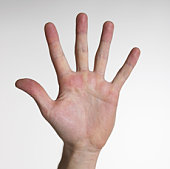
Improve Finger Independence on Piano
Even basic compositions can be difficult to master for the beginner who has never touched a piano. Because of the way the hands are built; fingers move together naturally. Nevertheless, with dedication, time and lot of patience, even the most stubborn fingers can become independent. Now, there are proven techniques to help improve finger independence. Although they may seem monotonous, they can help with rhythm and separating the right and left hands. One of the most famous and effective finger independence exercises is Brahms’s 51 exercises. They are 51 pieces of music written by Johannes Brahms to help students gain finger independence and better rhythm. Each exercise is a study in arpeggios, linear lines of notes up and down a staff of music. These piano arpeggios are written to be played on the treble and bass clefs simultaneously and are designed for those who have an understanding of music theory and some experience playing the piano. However, they can be adapted to any skill level and repeated until the exercise is mastered. For beginners, they are extremely beneficial even at a slow pace. If done properly, they can promote finger independence quickly. The way that the arpeggios are set up, beginners can easily play them within a single position with one hand.
Other techniques that have been effective for promoting finger independence are more exercises than technical recitation. There are some that can be done without a piano in any situation. It starts with placing your hands on any solid surface and lifting your fingers one at a time without raising the others. This can be done in any order, just raise one finger at a time. Another alternative to this exercise is multiple risings of the same finger, raising the pinkie five times then, then the ring finger ring five times, so on and so forth. This is particularly effective for problem fingers; typically the pinkie and ring fingers. The reason why those two fingers are the most difficult is because they share the same tendon and often rise together. One way to get the 4th and 5th fingers under control is to make trills anywhere on the piano with just those two fingers. This exercise can be adapted to help all five fingers, such as a trill with the 4th and 5th, fingers, then the 3rd and 4th, so on and so forth. Like all aspects of learning to play the piano, this requires a lot of practice and patience. Remember, forgive yourself for making mistakes. If there’s one common thread among all those who have quit playing the piano, it’s that they wouldn’t give themselves a break. Mastering the piano is difficult, but once your fingers become independent, the process becomes surprisingly easier.
http://pianoplayerworld.com/PianoSystem.html
| ||||
|
Although every attempt has been made to make information as accurate as possible, we are not responsible for any errors that may appear.
 One of the most difficult techniques for beginners is gaining finger
independence. For those who are just starting out, gaining control over the hands and fingers can be
intimating.
One of the most difficult techniques for beginners is gaining finger
independence. For those who are just starting out, gaining control over the hands and fingers can be
intimating.
 As you progress in their studies, beginners can play with both
hands, then move on to playing both clefs simultaneously and finally increasing speed. They are so effective,
that even advanced pianists can play them at exceptionally high speeds and can keep their skills at the
highest level.
As you progress in their studies, beginners can play with both
hands, then move on to playing both clefs simultaneously and finally increasing speed. They are so effective,
that even advanced pianists can play them at exceptionally high speeds and can keep their skills at the
highest level.



